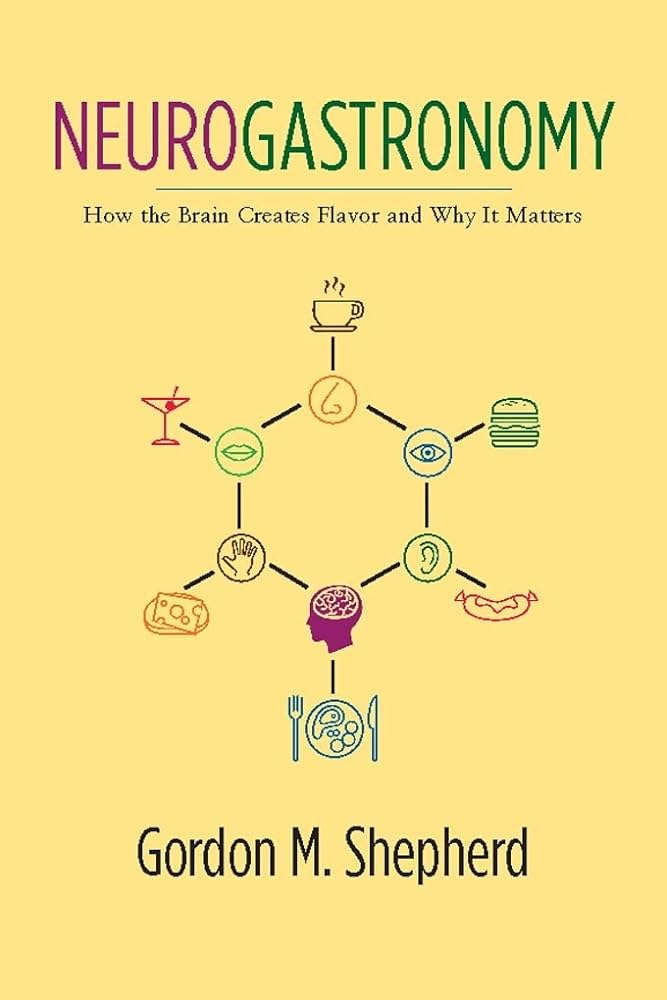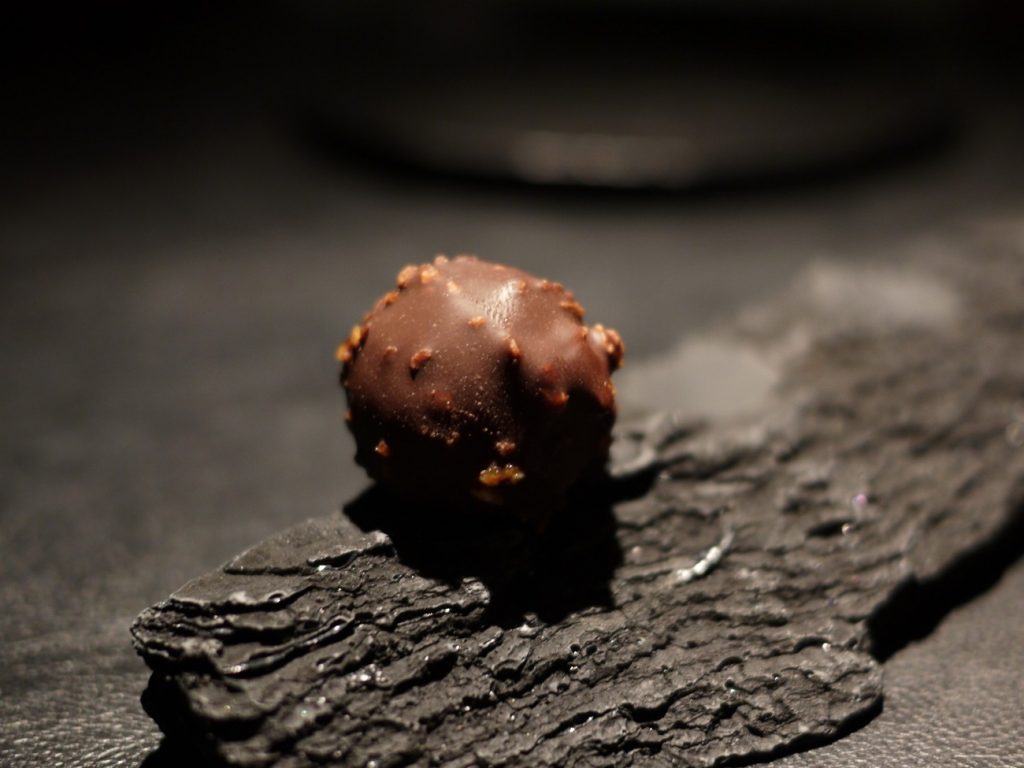
06 Mar ART-724-Neurogastronomy: How the Brain Creates Flavor and Why It Matters.
The most important apparatus in the culinary arts is not cutting-edge kitchen equipment or exotic ingredients; it is the senses. As neuroscientist Gordon Shepherd describes in Neurogastronomy, it’s through the senses that we translate the size and configuration of volatile molecules into qualitative meaning, from biochemical into flavourful.

In this succinct yet informative book, Shepherd distills more than 50 years of research — and the collective knowledge of scientists, gastronomes, chefs, anthropologists and artists — to improve our understanding of flavour. He describes the physiology and neuro-circuitry of eating in compelling detail, delving deeply into the brain’s systems for flavour detection. After introducing the science, he provides snapshots of seminal academics and culinary figures past and present.
Reading Neurogastronomy has convinced me that the answer to the question of why we are here is ‘flavour’. After all, the largest gene family in mammals codes for the primary determinants of flavour: the olfactory receptors. These genes comprise around 3% of the whole human genome — a greater percentage than that of immunoglobulin and T-cell receptors combined.
Shepherd starts with the basic science of smell and taste. Smell, he explains, is a dual sense: orthonasal and retronasal. When you take a sniff of something, such as by poking your nose into a glass of wine, that is orthonasal smelling.
Retronasal smelling is more involved. When you swallow food or drink, you close your mouth and exhale through your nose. A puff of air is then pumped past the olfactory epithelium in the upper nasal cavity, where the olfactory receptors are embedded. Volatile chemicals in the air ‘tickle’ the receptors, which generate a signal in the olfactory bulb. This is converted into an ‘odour image’ that the brain recognizes as an aroma. As Shepherd explains, retronasal smell has the bigger role in flavour.
We learn that flavour is a multi-modal perception: other senses come into play too. Mouth-feel — sensing the texture of foods through receptors inside the cheek, palate and tongue — can range from springy, chunky and stiff to gritty, astringent and painful (burning, sticking or aching). Hearing and sound are also important in relation to food texture and enjoyment of flavours: studies have found that crunching raw carrots produces a pitch of 1–2 kilohertz, whereas eating crispy flatbread produces more than 5 kHz. We generally prefer “clearer and louder” food sounds, says Shepherd, who speculates that we interpret them using the brain’s neocortex.
Beyond the immediate thrill of tasting chocolate, Thai curry or a red Bordeaux, flavour is an intimate part of ourselves, says Shepherd. Through it we connect to our environment, learn about our individuality and even gain insight into the origins of the human condition.

The book quotes anthropologist Richard Wrangham, who states that the advent of cooked food was key to human evolution: it required less energy to chew and increased the bioavailability of nutrients. The energy used to physically and chemically break down food could instead be diverted towards brain development, he says. Shepherd posits that our retronasal olfactory apparatus — and the flavours detected through it — allowed for detection and identification of a broader diversity of nutrients. This process, he says, ultimately led to the establishment of cuisines, which, apart from their national and cultural connotations, are one of the key ways in which humans successfully adapt to their environments.
Understanding that flavour is largely a creation of the brain, Shepherd argues, is crucial to addressing food-related health issues facing society today, such as lowering caloric intake and reducing sodium content without compromising flavour. When the nutritional sciences are applied in the food industry, the focus is often on the effects of including or excluding certain nutrients for health. But with improvements in nutritive heft must come improvements in flavour. The emerging field of neurogastronomy recognizes that requirement, and Shepherd is just one voice in a growing chorus calling for more collaboration among flavour experts, including chefs, neuroscientists and biochemists.
The book highlights key culinary figures past and present. Notably, the nineteenth-century French epicure and politician Jean Anthelme Brillat-Savarin, author of The Physiology of Taste (1825), pops up throughout to remind us that what we eat fosters critical evaluation of the natural world. Food and its flavours were the main point of inquiry for Savarin, and he pioneered some of Shepherd’s major themes, basic concepts and underlying mechanisms. Along with modern gastronomic heroes such as French chef Paul Bocuse, we encounter US food-science writer Harold McGee, who has inspired and guided chefs towards more evidence-based cuisine, and has investigated the role of flavour chemistry in the science underlying deliciousness.
Shepherd ends with an adept deconstruction of the famous sensory journey of Marcel Proust in his book Remembrance of Things Past — specifically, the tisane of lime-flower tea and the madeleine cake that sets Proust off on his epic memory-fest and reveals the hard-wired connectivity of flavour stimuli to memory, emotion and critical thought.
If flavour is the trigger for an act of the imagination as extraordinary as Proust’s magnum opus, what else might it do? Shepherd makes an excellent case for neurogastronomy as an important cross-disciplinary field that is likely to motivate a variety of imperatives for our health and well-being.
source: www.nature.com
author: Chris Loss – food scientist and director of menu research and development at The Culinary Institute of America, Hyde Park, New York 12538, USA


Sorry, the comment form is closed at this time.